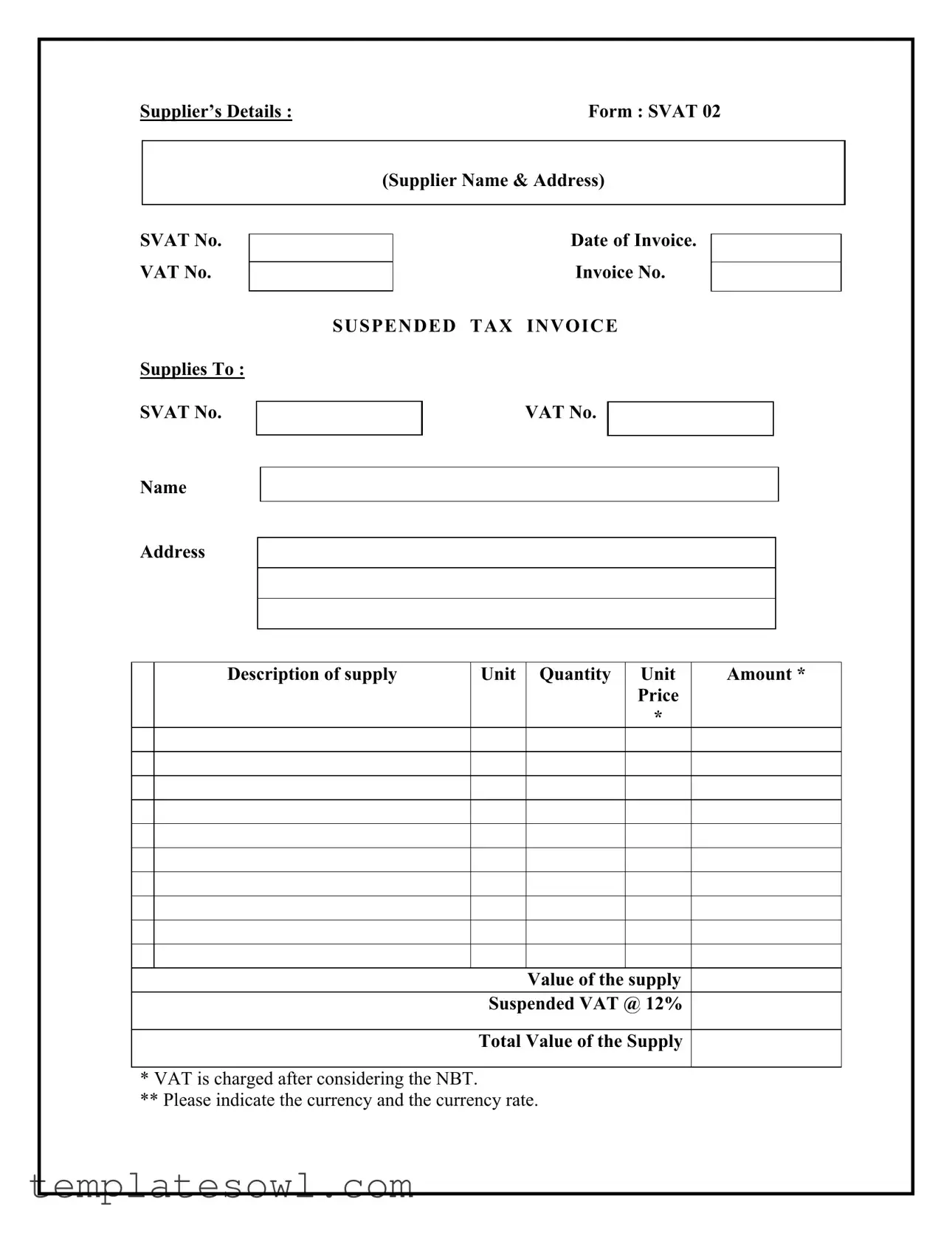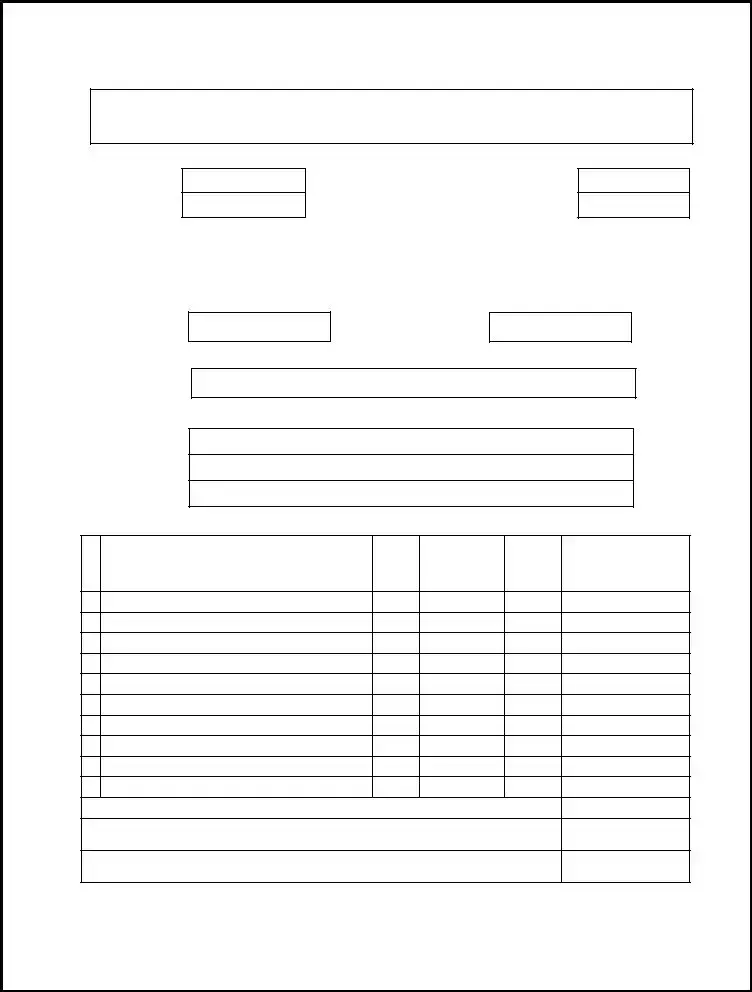What is the purpose of the SVAT 02 form?
The SVAT 02 form serves as a tax invoice for suppliers registered under the Suspended Value Added Tax (VAT) scheme. It allows suppliers to document their transactions accurately, helping ensure that the correct amount of tax is accounted for and maintained in compliance with local tax regulations.
What information is required on the SVAT 02 form?
To complete the SVAT 02 form, suppliers must provide several key details. This includes the supplier's name and address, their VAT number, the date of the invoice, and the invoice number. Additionally, the form requires the recipient's details, including their SVAT number and VAT number. Information about the supply itself must also be included, like a description of the goods or services, unit quantity, unit price, and the total value of the supply along with the suspended VAT at 12%.
How do I calculate the suspended VAT on the SVAT 02 form?
To determine the amount of suspended VAT to be noted on the SVAT 02 form, take the total value of the supply and multiply it by 12%. This calculation reflects the VAT that is suspended, meaning it will not be collected upfront but will be accounted for during tax submissions. Remember to consider the Net Business Tax (NBT) when calculating this amount.
Is there a specific currency format to follow on the SVAT 02 form?
Yes, when completing the SVAT 02 form, it is essential to indicate the currency in which the transaction is conducted. Additionally, you should specify the currency rate, especially if the transaction involves foreign currency. This provides clarity regarding the valuation of the supply and ensures accurate tax reporting.
What happens if I make an error on the SVAT 02 form?
If an error is discovered on the SVAT 02 form after it has been issued, it is crucial to correct it as soon as possible. You may need to issue a revised invoice, which should reference the original invoice number and indicate the adjustments made. Keeping accurate and corrected records helps maintain compliance and prevents potential tax issues down the line.
Who should use the SVAT 02 form?
The SVAT 02 form is primarily utilized by suppliers who are part of the Suspended VAT scheme. This includes businesses that are registered for VAT purposes but are eligible for suspension of the VAT charge on specific supplies. It is beneficial for both providers and recipients to understand their obligations under this system to ensure compliance with tax laws.
Can the SVAT 02 form be submitted electronically?
Some jurisdictions may allow electronic submissions of the SVAT 02 form, while others may require a hard copy. It's important to check with local tax authorities for their specific submission procedures. Utilizing electronic formats where permitted can enhance efficiency and improve record keeping for both suppliers and buyers.


